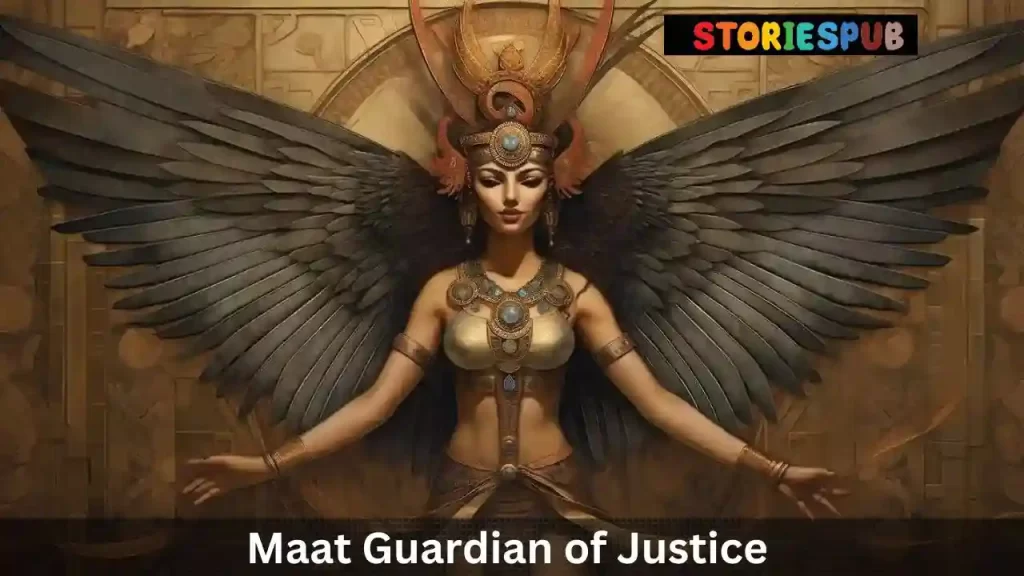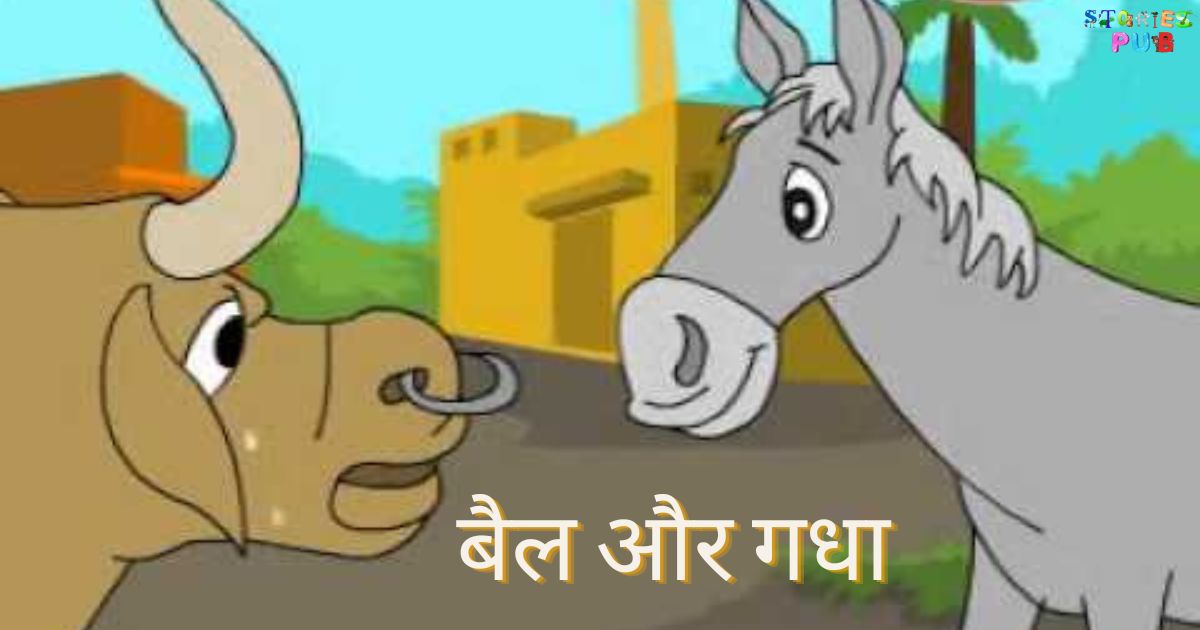Summarize this Article with:
Maat: The Divine Guardian of Truth, and Justice in Ancient Egypt.

Introduction
Ancient Egyptian mythology is rich and complex, with a pantheon of gods and goddesses who played important roles in the lives of the people. One of the most significant deities was Maat, the goddess of truth, justice, and order.
Maat was central to Egyptian religion and beliefs about morality and ethics. Her importance can be seen in her representation in art and architecture throughout ancient Egypt.
Brief Overview of Ancient Egyptian Mythology
The ancient Egyptians believed in a complex system of gods and goddesses who controlled different aspects of life. They believed that these deities could influence everything from fertility to the success or failure of crops. The gods were often depicted with animal heads or other animal features, reflecting their association with particular animals.
One important aspect of Egyptian religion was their belief in an afterlife. The Egyptians believed that when someone died, their soul would journey through various levels of existence before being judged by Osiris, the god of death and rebirth.
Introduction of Maat as the Goddess of Truth, Justice, and Order
Maat was one of the most important deities in ancient Egyptian mythology. She was depicted as a woman wearing a feather headdress or carrying a set square (a tool used by architects).
Maat represented truth, justice, balance, order, harmony, lawfulness and morality; ideas that were highly valued by ancient Egyptians. The idea behind Maat was that all things must be balanced – just as the scales must be equal when weighing objects against each other.
In this way she represented fairness and equality in all aspects on life including social justice which meant fair distribution if wealth & resources among people. Maat is often mentioned alongside Ra – God Of Sun since both were considered complementary forces needed for creation.
Ra was responsible for the creation of physical elements, while Maat was responsible for the laws that governed them. This meant that Maat played an important role in maintaining order in the world and ensuring that everything remained balanced.
Maat’s role was not limited only to the physical world. The ancient Egyptians also believed in a moral code, and Maat was seen as the embodiment of this code.
She represented truth, fairness, and justice – all values which were highly prized by the Egyptians. It is clear that Maat played an incredibly important role in ancient Egyptian religion and society.
Her influence can still be felt today through modern concepts of justice and morality. Understanding her place in Egyptian mythology can give us greater insight into their beliefs about how to live a good life.
The Origins of Maat
The Creation Story and the Role of Maat in It
In ancient Egyptian mythology, Maat was believed to be one of the most important goddesses. She was considered the personification of truth, justice, and order. According to creation myths, Maat played a vital role in the formation of the universe.
It is said that she was present when the sun god Ra emerged from chaos and created order out of darkness. As such, her importance in ancient Egyptian mythology cannot be overstated.
Maat’s role went beyond just being present at creation. Her very existence represented balance and harmony in Egyptian society.
The ancient Egyptians believed that if Maat were not present, chaos would reign supreme. Therefore, it was vital for everyone to uphold her values and principles so that she could continue to exist.
The Significance of Maat in Ancient Egyptian Society
Ma’at was central to the functioning of their society as a whole; it governed everything from law to agriculture. Egyptians believed that by following Ma’ at’s teachings they could lead a harmonious life free from chaos. That’s why she held such an important place in their culture.
The pharaohs were seen as protectors of Ma’ at since they were responsible for upholding law and order throughout Egypt. Whenever there were disputes or conflicts between citizens or even between different regions within Egypt itself which required resolution; they turned towards Pharaohs as arbitrators who upheld justice with help from goddesses like ma’ at.
Ma’ at had a huge influence on art and architecture too; temples dedicated to her were often grandiose structures meant not only for worship but also served as symbols highlighting how important she was in Egyptian culture. It is clear that Ma’ at played a vital role in shaping ancient Egypt’s society and belief system.
Her teachings and principles provided a framework for the harmonious functioning of society. It is no wonder that she was held in such high regard, and her legacy continues to inspire and influence us, even today.
Maat’s Role in the Afterlife
Ancient Egyptians believed that the afterlife was a continuation of life on earth and that every person had a
soul or ka that would survive death. The weighing of the heart ceremony, also known as the judgment of Osiris, was one of the most important rituals in ancient Egyptian religion. It was believed that after death, all souls were judged by a council of gods, with Maat presiding over the proceedings.
The Weighing of the Heart Ceremony and Its Importance
During this ceremony, it was thought that a person’s heart would be weighed against Maat’s feather of truth. If their heart was lighter than the feather, they were deemed worthy to enter into the afterlife. However, if their heart was heavier than Maat’s feather, it meant they had lived a life filled with wrongdoing and chaos.
The weighing of the heart ceremony was an important aspect of ancient Egyptian religion because it emphasized how significant living a virtuous life was to reach eternal paradise. It also highlighted how much value truth held in Egyptian culture as lying or deceitfulness could cause one’s heart to become heavy.
The Role of Maat in Determining One’s Fate After Death
The importance placed on living an ethical and just life in ancient Egypt reflected upon Maat’s role in determining one’s fate after death. Those who exemplified Ma’ at’s virtues were rewarded by being allowed into Paradise for eternity; while those who did not would face everlasting punishment.
Ma’ at is often depicted holding scales which symbolize her role as one who weighs and measures hearts against her own standard; truthfulness over falsehoods . Her significance as goddess is seen throughout many texts such as The Book Of The Dead where she is mentioned multiple times in connection with “truth” and “justice”
Ultimately, Ma’ at provided balance and harmony to ancient Egyptian society, both in life and in death. Her influence held a great impact on the religion, culture, and everyday life of the people of ancient Egypt as they strived to live up to her standards and ideals.
Symbols and Depictions
Symbolism associated with Maat
Maat was associated with a variety of symbols that represented different aspects of her persona. One of the most well-known symbols is the ostrich feather, which represents truth and justice. Other symbols include the ankh, a symbol of life, and the Was scepter, which represents power and dominion.
Maat was also often depicted holding a balance scale, representing her role in weighing the hearts of the deceased during the afterlife judgment. Maat’s association with balance and harmony is another important aspect of her symbolism.
She was believed to maintain cosmic order by ensuring that all things were in their proper place, such as maintaining a balance between day and night or controlling the flow of the Nile river. This concept extends beyond just physical balance to also include moral equilibrium and ethical behavior.
Depictions of Maat in ancient Egyptian art
In ancient Egyptian art, Maat is often depicted as a woman wearing an ostrich feather on her head or carrying a balance scale. She is portrayed as serene and calm, embodying order and harmony.
In some depictions, she is shown standing beside Pharaohs during important ceremonies or holding court with other gods. One notable depiction of Maat can be found on the walls inside many tombs from ancient Egypt.
Here she is seen participating in various scenes from daily life such as hunting or farming alongside other gods like Anubis or Osiris. In addition to traditional depictions, there are also many artistic representations that portray Ma’ at in more abstract ways.
For example, one famous statue shows her seated atop an altar-like structure while holding up two arms that represent two halves of an equation balancing one another out. Some historians believe that these abstract representations were used to emphasize Ma’ at’s importance as a philosophical concept rather than just a deity to be worshipped.
Maat’s Influence on Egyptian Art
Artwork from ancient Egypt serves as a testament to the importance of Ma’ at in their society. Her representations can be found in a variety of mediums including statues, frescoes, and papyrus scrolls. The accuracy and detail present in these works demonstrate the significance placed on honoring her.
In fact, many artists from that era were commissioned to create works that featured Ma’ at or included her symbols as an homage to the goddess. This further emphasizes how deeply ingrained she was within Egyptian culture, not just as a religious figure but also as a symbol of order and harmony.
Overall, Maat’s symbolism and depictions in ancient Egyptian art play an important role in understanding the significance she held within their culture. Her association with balance, harmony, and ethical behavior make her influence still relevant today.
Worship and Rituals
Temples dedicated to Maat
Maat was a prominent goddess in ancient Egyptian religion and was worshipped in various temples throughout Egypt. One of the most famous temples dedicated to her was the Temple of Maat, located in Karnak, which was built during the New Kingdom period. The temple complex consisted of several smaller temples and sanctuaries that were dedicated to different gods and goddesses.
Maat’s temple had a large central hall with columns decorated with reliefs of the goddess herself. Another notable temple dedicated to Maat was the Temple of Philae, which is located on an island in the Nile River near Aswan.
This temple was built during the Ptolemaic period and is considered one of the most beautiful temples in Egypt due to its stunning location surrounded by water. The temple has several halls, sanctuaries, and shrines dedicated to various gods and goddesses.
Rituals performed to honor and appease her
Various rituals were performed by priests and worshippers to honor Maat, who represented truth, justice, balance, order, morality, ethics etc. These rituals usually involved offerings such as food items or precious objects placed at her altar within a temple or shrine. One common ritual performed during ancient Egyptian times involved placing small figurines of Maat on a person’s tongue while reciting prayers or invocations for truthfulness and honesty. This practice symbolized an individual’s commitment towards upholding principles of justice and order according to Ma’ at’s teachings.
Another important ritual associated with Ma’ at was the daily offering ceremony known as ‘hetep di nesu’. This ceremony involved offering food items such as bread, wine or meat at her altar within a temple or shrine.
The purpose behind this ritual was to appease Ma’ at so that she would maintain order and balance in the world. In addition to these rituals, festivals were also celebrated in honor of Maat.
One such festival was the ‘Feast of the Beautiful Valley,’ which was held annually at Thebes during the New Kingdom period. This festival involved a grand procession of the gods and goddesses, culminating in offerings being made at Maat’s temple.
Overall, these rituals and festivals were important aspects of ancient Egyptian religion and helped to maintain a sense of order and balance in society. They also reinforced the importance of truth, justice, ethics etc. according to Ma’ at’s teachings.
Decline and Revival
The decline of worship towards Ma’at during the Ptolemaic period
During the rule of the Ptolemaic dynasty, which began after Alexander the Great’s conquest of Egypt in 332 BC, there was a decline in worship towards Ma’at. This can be attributed to several factors, including the introduction of new gods and goddesses by the Greeks and Romans, as well as changes in religious beliefs and practices.
One significant change during this period was the emergence of syncretism, which involved combining different gods and goddesses from various cultures into one. As a result, Ma’at became associated with other deities such as Isis or Hathor.
Furthermore, with the influx of foreign rulers, there was a shift towards more centralized power structures that were less reliant on traditional religious practices. This led to a decrease in offerings and sacrifices made to Ma’at.
Despite these changes, however, Ma’at’s teachings continued to influence Egyptian society. They remained central in matters such as lawmaking and governance since they provided guidelines for good behavior.
The revival of interest towards her during modern times
Ma’at’s influence has experienced a revival in modern times due to increased interest in ancient Egyptian culture and spirituality. In recent years there has been an upsurge in groups dedicated to studying her teachings and incorporating them into daily life.
Some scholars have also pointed out that Ma’at’s principles align well with contemporary concepts such as social justice, environmentalism, and human rights. Therefore many individuals have turned towards studying her teachings for guidance on how to make positive contributions within their communities while maintaining moral integrity.
Additionally, her relevance is also evident within several fields such as psychology where she is invoked as an archetype for balance between opposing forces like light vs dark or good vs evil. While there was a decline in worship towards Ma’at during the Ptolemaic period, her teachings continue to influence modern thinking.
Her principles of truth, justice, and order continue to inspire individuals to live lives that are based on ethical standards and moral integrity. The revival of interest in her demonstrates her relevance even in contemporary society as people seek guidance on how to lead fulfilling lives that are anchored in virtue.
Legacy
Ma’at, the goddess of truth, justice, and order, was an integral part of the ancient Egyptian religion. Her influence can still be seen in modern-day concepts such as ethics, morality, law, and justice.
The ancient Egyptians believed that Ma’at was responsible for maintaining balance and harmony in the universe. This belief influenced their daily lives and the way they interacted with each other.
Ma’at’s teachings emphasized the importance of treating others with respect and fairness. These teachings have had a lasting impact on modern society’s approach to ethics and morality.
In many cultures around the world, it is considered important to treat others as you would like to be treated yourself – a principle that is directly related to Ma’at’s teachings. In addition to influencing ethical principles, Ma’at also had a significant impact on ancient Egyptian law.
The concept of justice was closely tied to Ma’at’s teachings about balance and harmony. Ancient Egyptian judges were expected to uphold these principles when making decisions about legal disputes.
Ma’at’s Influence on Ethics
Ma’at’s influence can be seen in modern-day ethical theories such as virtue ethics. Virtue ethics emphasizes the importance of developing good character traits like honesty, fairness, and compassion in order to live a good life. This approach is similar to Ma’at’s teachings about treating others with respect and maintaining balance.
Another way that Ma’at’s influence can be seen is through deontological ethics – which emphasizes following moral rules without exception. Ma’at’s emphasis on truthfulness also aligns with deontological thinking since it values honesty as an absolute moral principle.
Maat’s Influence on Law
In addition to influencing ethical theories, Ma’at also had a significant impact on ancient Egyptian law. The concept of justice was tied directly to her teachings about balance and harmony.
Ancient Egyptian judges were expected to uphold these principles when making decisions about legal disputes. Ma’at’s influence on law can also be seen in modern-day legal systems.
Many legal codes around the world emphasize the importance of fairness, balance, and impartiality – all principles that are central to Ma’at’s teachings. The principle of “innocent until proven guilty” is another example of how Ma’at has influenced modern legal thinking.
Conclusion
Throughout history, people have turned to powerful deities to provide them with guidance and stability in an often chaotic world. Maat, the ancient Egyptian goddess of truth, justice, and order, provided a framework for society that emphasized balance and harmony.
Her influence can be seen in everything from the Egyptian legal system to modern concepts of morality and ethics. In this article, we have examined the origins of Maat and her role in ancient Egyptian society.
From the creation story to rituals performed in her honor, it is clear that Maat was an integral part of daily life for many Egyptians. We also explored Maat’s role in the afterlife, where she presided over the weighing of the heart ceremony that determined one’s fate.
Symbolism associated with Maat played an important role as well. The feather of truth represented her ideals while depictions of Maat were common in art throughout Egypt.
Temples dedicated to her remain standing today as a testament to her continued importance. Despite a decline in worship during the Ptolemaic period, interest has been revived toward goddesses like Ma’ at during modern times as people continue seeking guidance on how to live ethical lives.
Her influence on modern concepts such as law and justice is unmistakable; without understanding balance and harmony there can be no true justice. The legacy left by goddesses like Ma’ at reminds us that despite cultural differences throughout time periods we all seek balance and fairness in our lives.
While our methods might differ from those used by cultures long gone there’s much we can learn from these ancient customs still practiced today. It is our duty to remember this history so that future generations can benefit from these lessons too – just as we benefit now from what has been passed down through time about this iconic deity who once held sway over life itself!
Hey kids, how much did you like
Hey kids, how much did you like
Hey kids, how much did you like Maat: The Divine Guardian of Truth, and Justice in Ancient Egypt. ? Please share your view in the comment box. Also, please share this story with your friends on social media so they can also enjoy it, and for more such Egyptian Mythology, please bookmark storiespub.com.
? Please share your view in the comment box. Also, please share this story with your friends on social media so they can also enjoy it, and for more such Egyptian Mythology, please bookmark storiespub.com.
Related Post :
? Please share your view in the comment box. Also, please share this story with your friends on social media so they can also enjoy it, and for more such Egyptian Mythology, please bookmark storiespub.com.
Related Post :
FAQs about Maat
Who is Maat in Egyptian mythology?
Maat is the ancient Egyptian goddess of truth, justice, and order. She represents the cosmic balance and moral principles that governed both the natural world and human society.
How is Maat typically depicted in art?
Maat is usually depicted as a woman wearing a crown adorned with an ostrich feather, which represents truth. She is also shown holding a scepter and an ankh, symbolizing power and life.
What is the significance of the feather of Maat?
The ostrich feather of Maat symbolizes truth and is used in the weighing of the heart ceremony, where the deceased person's heart is weighed against the feather to determine their worthiness for the afterlife.
How did Maat influence ancient Egyptian law and ethics?
Maat embodied the fundamental values of truth, justice, and order that underpinned ancient Egyptian society. These values guided ethical behavior, social interactions, and the administration of justice.
What is the role of Maat in the afterlife?
In the afterlife, Maat presided over the judgment of souls in the Hall of Maat. The deceased's heart was weighed against her feather to determine if they lived a just and truthful life.
How did ancient Egyptians honor Maat?
Ancient Egyptians honored Maat through adherence to her principles in daily life, as well as through offerings and prayers to the goddess in temples and personal shrines.
Was Maat associated with any specific temples or locations in Egypt?
Although Maat did not have a dedicated temple, she was worshipped in many temples throughout ancient Egypt, often in association with other deities, such as Ra and Osiris.
How was Maat connected to the other gods in the Egyptian pantheon?
Maat was considered the daughter of Ra, the sun god, and played a crucial role in maintaining the balance of the universe, ensuring harmony among the gods and the natural world.
What modern cultural references exist for Maat?
Maat's legacy can be found in modern literature, film, and video games inspired by ancient Egyptian mythology and history, often featuring her as a symbol of truth, justice, and order.
How does Maat's concept of truth and justice relate to modern ethics?
Maat's principles of truth, justice, and order have transcended time and continue to inspire modern ethical thinking, emphasizing the importance of living a morally upright life and promoting social harmony.










